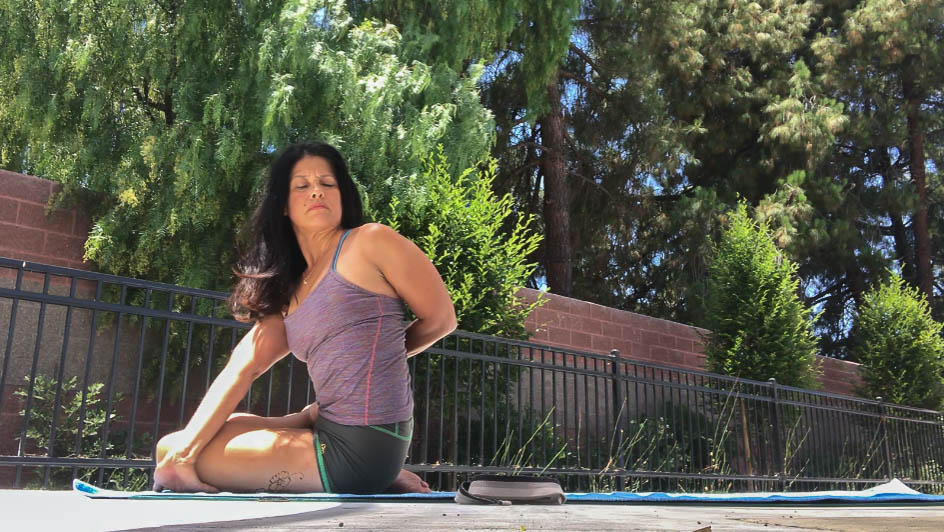lib·er·at·ed
I have been working diligently on the last few poses before the 7 headstands of Intermediate Series (aka nadi shodhana or Second Series). Like the rest of Intermediate Series, mastering these poses has not come easy. In fact, I don’t know that one would say that I have “mastered” any of them. Unlike Primary Series, where I yearned for the next pose almost immediately after receiving a new one, my journey in this series has been unhurried and somewhat cautious.
I remember a point when my unwillingness to meet kapotasana had changed to a curiosity of the pose. I began working overtime on laghu vajrasana hoping to meet my teacher’s expectations of what she would consider mastery (or an acceptable level of proficiency). Then, kapotasana had its way with me. It undid me from the outside in and left me sobbing. Some time later, the leg-behind-the-head poses began working on me — as I began working on them. They broke me down literally (sacroiliac joint issues). I broke up with them for a bit. Then, after a time of missing them, rekindled the relationship. Then came pincha mayurasana, karandavasana, mayrasana, vatayanasana. One after the other, with a few gentler poses dropped in for a little sanity check, the poses told me that I “can’t” and that I am “not enough” every morning. By the time I reach supta urdhva pada vajrasana, I’ve surrendered to the practice.
When Leigha, our guest teacher nonchalantly mentioned the plan to finish off the series by the end of the month, a part of me thought she might change her mind once she saw my practice. I feared that I might lose a few poses, in fact. I didn’t lose any, but she didn’t let me skate either.
- She narrowed my hands in pincha mayurasana
- I am dropping each leg (alternating sides) into half lotus in the arm balance for karadavasana
- My vatayasana got a major overhaul with seemingly impossible requirements that I didn’t think possible
- No grabbing a strap in supta urdhva pada vajrasana. It’s the toe! And the knees are insanely close together in the landing
There was so much work to do and, although July has 31 days, the month hardly seemed long enough to master the task(s) at hand.

Strangely enough, I no longer was satisfied with what I had; the carrot had been dandled and I was now chasing it down. Once again, I began working overtime — studying the poses and practicing them on rest days (moon days and on Saturdays). My practice took on a new infectious persona of sorts. She woke me up before my alarm, and found her way into my dreams as well. She beat me down energetically so that I was fully worn out early in the evenings too. In an odd way, it was liberating.
So, it was pretty funny when Leigha cheerfully announced that mukta hasta was coming my way. Thinking she said mukha (face), I asked her what she meant. I was still doing my sun salutations. “MukTa”, she said, “means ‘liberated’.” She could tell that I still didn’t know what she was referencing. “You’re going to be getting a few headstands today. So get ready.”
*smile*
When we work from a place of ‘I’m enough’, we stop screaming and start listening. We are kinder and gentler to the people around us, and we’re kinder and gentler to ourselves.” -Brené Brown
I must admit that, after all my hard work, I do feel kind of liberated to be coming to the end of Intermediate. I know that I still have a lot of work to do in those poses that used to have me believing that I wasn’t enough. And that’s okay.
